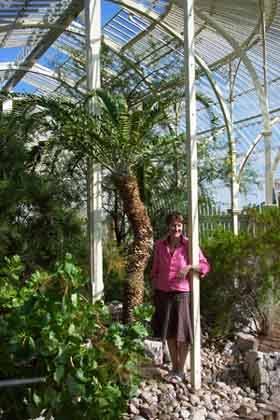Encephalartos woodii, one of our most treasured plants, went back on show today after being behind the scenes for the past 3 years with the restoration of the Palm House.
It comes from South Africa, and has now been planted in the east wing of the Curvilinear house, where a bed is dedicated to the South African flora.
Encephalartos woodii has only ever been found once in the wild, near the town of Durban in 1895. The only known plants are all male, which means this species, with no surviving females, is unable to reproduce, so technically it is already extinct.
Our plant has been grown at Glasnevin for 100 years, it has never yet produced a cone, and the truth is we don’t really know how it came to be with us, since the original receipt from 1905 has got the wrong species name on it ! This is the first time it has been planted into the ground, and we have high hopes that this may give it the spur to produce its first cone. The big question is, Is it a male plant ? or could it possibly be a female?
Occuring throughout the tropics, cycads are usually found in small groves with few seedling recruitments. Each plant is either male or female and it can take up to 25 years before they produce their first cones. This slow rate of reproduction and small population size coupled with the threats they face from commercial collectors means that nearly all species of cycad are threatened with extinction.

